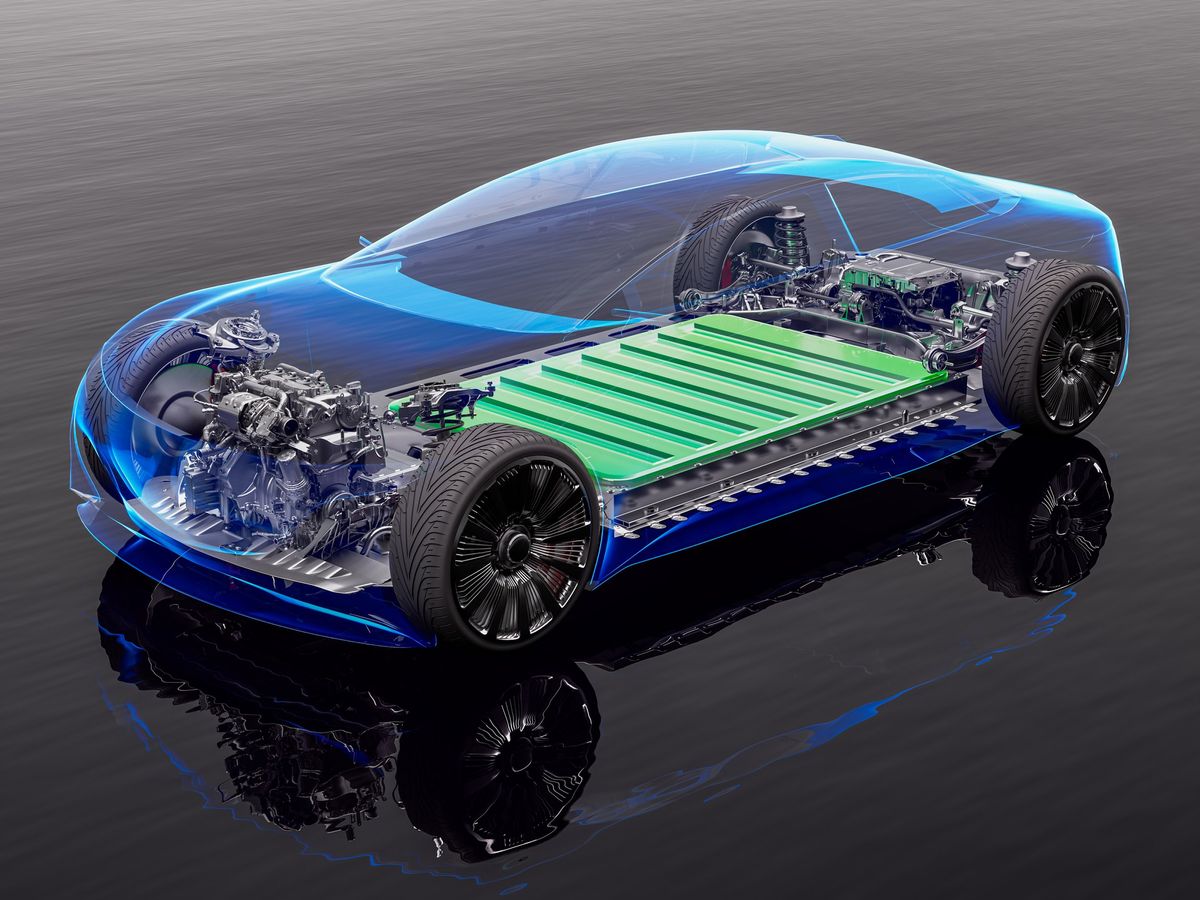Cars catch fire. Electric vehicles are no exception. In the United States, according to a 2023 study citing recent data from the National Transportation Safety Board and the Bureau of Transportation Statistics, gasoline-powered, internal-combustion engine (ICE) cars were involved in about 1,530 fires per every 100,000 sold. On the other hand, pure electric vehicles (meaning those powered only by batteries) were involved in just 25 fires per 100,000 sold. Yet, says, Paul A. Kohl, a professor at GeorgiaTech’s School of Chemical and Biomolecular Engineering, in Atlanta, “The media don’t treat EVs and ICEs with equal footing, because gasoline is not sensational anymore.”
Speaking of fires in cars fueled by gasoline or diesel, he says, “It’s an everyday event. You don’t have to go far to see [a car on fire]. Two days ago, I passed one on the highway, and the fire engines were just getting there. Flames were coming out of the top, and no one even looked at it. It hardly got a glimpse. And it certainly didn’t appear in the news.”
An ICE car going up in flames is, Kohl says, widely considered an acceptable risk today. As a result, the occasional gasoline-fueled car fires one sees on the side of the highway can be treated, Kohl notes, as “an un-event.”
“The media don’t treat EVs and ICEs with equal footing, because gasoline is not sensational anymore.”
–Paul Kohl, GeorgiaTech
However, when fires break out that involve more than one electric vehicle—whether car or scooter or e-bike—media and authorities have recently revealed a tendency to rush in to blame the EV.
For instance, a deadly building fire in Hanoi, Vietnam, in September reportedly became the subject of unsubstantiated rumors. The blaze had allegedly been kicked off by an electric scooter that was connected to a charger on the premises, according to reporting by the investigative tech news site Rest of World. A citywide backlash against battery-powered vehicles followed, as reported by multiple sources. The immediate fallout has been new restrictions that hamper gig workers’ ability to charge their two-wheeled EVs. (Meanwhile, investigators ultimately concluded that a gasoline-powered scooter had in fact caused the fire.)
The Hanoi fire took place two months after another fire was wrongly blamed on EVs. In July, a Panamanian-flagged, Japanese-owned ship called the Fremantle Highway, which was ferrying 3,800 new cars across the Atlantic Ocean on its way to Singapore, caught fire. Of the vehicles in its holds, 498 were electric cars. Media outlets around the world piled on the speculation that an EV battery must have caused the blaze that wound up claiming one life. “The number of electric cars is said to be higher than first thought,” noted the global shipping news outlet TradeWinds, “and could explain the North Sea casualty.”
Soon enough, the fire was extinguished, and the ship was towed to a port on the coast of The Netherlands, as reported by CleanTechnica. It wasn’t long before the grist in the rumor mill was contradicted by investigators’ finding that all 498 electric cars were in good condition and that the blaze appeared to have begun several decks above the place on the craft where the EVs had been situated.
In 2022, there were only 24 EV car fires in Sweden, representing 0.004 percent of battery-powered cars there. For cars running on gasoline or diesel fuel, the fire rate was 0.08 percent, or 20 times the frequency.
In a 10 August press release issued after the initial inquiry into the blaze aboard the ship was completed, the International Union of Marine Insurance (IUMI) said, “No fire onboard a [roll-on/roll-off cargo ship] or Pure Car and Truck Carrier (PCTC) has been proven to have been caused by a factory-new EV.” The organization concluded that concerning EV fires, “Research suggests that the risks are not heightened or more dangerous.”
In Sweden, where battery EVs and hybrids already represent 40 percent of new cars sold, the numbers reveal an even more pronounced trend. According to MSB, Sweden’s Civil Protection and Emergency Management Agency, the total number of EV fires in the country reached an annual peak of 106 last year.
But MSB reports that in 2022, there were only 24 EV car fires in Sweden, representing 0.004 percent of battery-powered cars there. For cars running on gasoline or diesel fuel, the fire rate was 0.08 percent, or 20 times the frequency.
Part of the fear surrounding EV battery fires has been how challenging they are to extinguish once they get started. But for the most part, the struggle comes down to applying the tried-and-true solutions to petroleum fuel problems to an electrochemical issue. Firefighters have consistently reported being unable to extinguish lithium-ion battery fires regardless of how much water they apply to a conflagration. It’s easy to understand why. According to the National Fire Protection Association, only about half of the 1.2 million firefighters in the United States are currently trained to combat EV fires.

“[Firefighters have] had 100 years to train and to understand how to deal with internal combustion engine fires,” the NFPA’s Andrew Klock told Vox. “With electric vehicles, they don’t have as much training and knowledge.”
But MSB’s Per-Ola Malmqvist has developed webinars that explain how to safely put out battery fires. In a 2022 webinar, he described the tools and techniques that were used to put out a raging EV battery fire in 10 minutes using only 750 liters of water. In another webinar about EV fire suppression best practices, Malmqvist interviewed a firefighter from Vestfold Fire Service in Norway, where the extinguishing method Malmqvist recommends was tried for the first time in battling an electric-vehicle blaze.
Despite the scapegoating of EVs, global momentum, spurred by concerns about the consequences of continuing to burn fossil fuels, is still moving in the direction of battery electrics. According to a June report from the U.S. National Renewable Energy Lab (NREL), “Companies in the automotive industry have committed to this transition, with most companies rapidly expanding offerings and many pledging to become ZEV [zero-emission vehicle]-only manufacturers. Tesla has been a ZEV-only company since its inception in 2003; Audi, Fiat, Volvo, and Mercedes-Benz are targeting ZEV-only sales by 2030; and General Motors and Honda are targeting ZEV-only sales by 2035 and 2040, respectively.”
The report addresses concerns over the ability of the world’s grid infrastructure to stay ahead of demand as more vehicles depend on it for propulsive energy. It dispels the talking points predicting widespread grid failures as more EVs are plugged in for charging. The report’s lead author, NREL researcher Eric Wood, told Spectrum, “We believe there is strong evidence that EVs will not break the grid anytime soon. Transportation electrification is front and center for electric utilities, regulators, and [the U.S. Department of Energy], with planning happening on all fronts.”
The NREL report’s authors note that amid the transition to ZEV hegemony, “Convenient and affordable charging at/near home is core to the ecosystem but must be complemented by reliable public fast charging.” In places like Hanoi, home charging is being impeded because of EV scapegoating—even as evidence mounts illustrating that electric vehicles’ reputation for being rolling camp stoves is undeserved. Eventually, vehicles with propulsive energy from batteries will no longer be unfamiliar and sensational. Then, it will be possible for empirical evidence to unseat beliefs about EVs that are unsubstantiated by fact.
- Tesla's Lithium-Ion Battery Catches Fire ›
- This Solid-State Lithium-Ion Battery Recharges Fast, Protects Against Fire ›
Willie Jones is an associate editor at IEEE Spectrum. In addition to editing and planning daily coverage, he manages several of Spectrum's newsletters and contributes regularly to the monthly Big Picture section that appears in the print edition.



